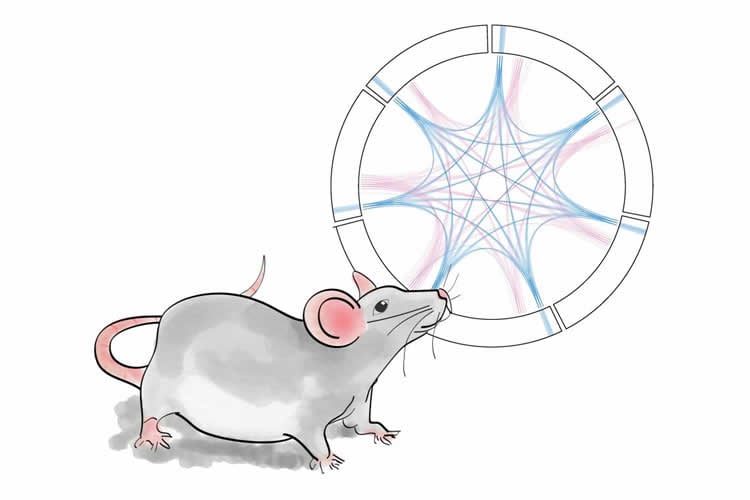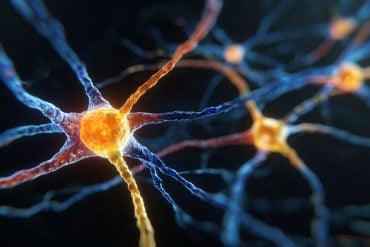Summary: A new mouse study discovers different networks of brain activity in animals more susceptible to developing depression following a stressful event.
Source: Duke University.
Tapping into the electrical chatter between different regions of the brain may provide a new way to predict and prevent depression, according to new research by Duke University neuroscientists and electrical engineers.
The researchers found different networks of electrical brain activity in mice that were more susceptible to developing depression-like symptoms following stressful events than in more resilient mice.
If replicated in humans, these results could be the first step toward a test to predict a person’s vulnerabilty to developing mental illnesses like depression.
“What we are essentially creating is an electrical map of depression in the brain,” said Dr. Kafui Dzirasa, associate professor of psychiatry and behavioral sciences, neurobiology and biomedical engineering at the Duke University School of Medicine. “We hope this could be used as a predictive signature of depression, in the same way that blood pressure is a predictive signature of who will ultimately have a heart attack or stroke.”
The study appeared March 1 in the journal Cell.
Most people experience major life stressors from time to time. The death of a loved one, loss of a job or challenging medical diagnosis can cause difficult emotions such as grief, sadness, anxiety or anger. But while some are able to bounce back from these stressors relatively quickly, others go on to experience mental illnesses such as depression or anxiety.
For the past three decades, neuroscientists have used imaging and electrical monitoring to study how activity in individual brain regions may predispose an individual to developing mental illness.
In 2010, Dzirasa and his graduate mentor, Dr. Miguel Nicolelis, developed a technique that can monitor electrical activity in not just one region of the mouse brain, but in many regions simultaneously. The results reveal how different areas of the brain work together to create specific mental states.
“You can think of different brain regions as individual instruments in an orchestra,” Dzirasa said. “We are interested in not just what each instrument is doing, but how the instruments coordinate themselves to generate music.”
In the experiment, each test mouse was placed in a cage with a larger and more aggressive mouse. After residing with this pugnacious roommate for ten days, many mice developed symptoms that resemble depression in humans, including anxiety, social avoidance and difficulty sleeping.
Before and after experiencing this stress, Dzirasa and postdoctoral fellow Rainbo Hultman measured brain activity in seven different brain regions that have been linked to depression, including the prefrontal cortex, the amygdala and the hippocampus.
Using machine learning techniques developed by Duke colleagues Kyle Ulrich, David Carlson and Lawrence Carin, the team constructed the brain “music” for each mouse. They found the mice who developed depression-like symptoms exhibited different patterns of brain activity both before and after the stress test than those who were more resilient to the experience.

The results may be useful for treatment as well as prevention of depression, Dzirasa said.
“To date, the most effective treatment for depression remains electroconvulsive therapy, but it comes along with a lot of side-effects,” Dzirasa said. “It might be possible to target electricity to the right place in the right way to create a treatment that doesn’t have the same side-effects as putting electricity everywhere.”
Monitoring networks of electrical brain activity holds promise for understanding not only depression, but other forms of mental illness as well, said Conor Liston, an assistant professor of neuroscience and psychiatry at Weill Cornell Medicine who was not involved in the study.
“Many scientists believe that the behavioral and clinical symptoms that define most psychiatric conditions — not just depression — are driven by changes at the brain network level,” Liston said in an email. “This report defines a new approach combining machine learning and other state-of-the-art statistical methods with multi-circuit recordings in mice that will probably inspire investigators to apply similar methods to advance our understanding of the neurobiology underlying other forms of mental illness.”
Funding: This work was supported by the National Institutes of Health (MH79201-03S1, MH099192-05S1, MH099192-05S2 and MH096890) the Lennon Family Foundation, the DARPA HIST program and the One Mind Institute Rising Star Award. Additional support was provided by Kerima L. Collier.
Source: Kara Manke – Duke University
Publisher: Organized by NeuroscienceNews.com.
Image Source: NeuroscienceNews.com image is credited to Jeff Macinnes and Kafui Dzirasa, Duke University.
Original Research: Abstract in Cell.
doi:10.1016/j.cell.2018.02.012
[cbtabs][cbtab title=”MLA”]Duke University “Networks of Brain Activity Predict Vulnerability to Depression.” NeuroscienceNews. NeuroscienceNews, 2 March 2018.
< https://neurosciencenews.com/depression-brain-activity-8561/>.[/cbtab][cbtab title=”APA”]Duke University (2018, March 2). Networks of Brain Activity Predict Vulnerability to Depression. NeuroscienceNews. Retrieved March 2, 2018 from https://neurosciencenews.com/depression-brain-activity-8561/[/cbtab][cbtab title=”Chicago”]Duke University “Networks of Brain Activity Predict Vulnerability to Depression.” https://neurosciencenews.com/depression-brain-activity-8561/ (accessed March 2, 2018).[/cbtab][/cbtabs]
Abstract
Brain-wide Electrical Spatiotemporal Dynamics Encode Depression Vulnerability
Highlights
•Brain-wide electrical spatiotemporal dynamic map of stress states
•Hippocampally directed network signals stress vulnerability in stress-naive animals
•Early life stress increases activity in stress vulnerability network
•Stress vulnerability network is mechanistically distinct from pathology networks
Summary
Brain-wide fluctuations in local field potential oscillations reflect emergent network-level signals that mediate behavior. Cracking the code whereby these oscillations coordinate in time and space (spatiotemporal dynamics) to represent complex behaviors would provide fundamental insights into how the brain signals emotional pathology. Using machine learning, we discover a spatiotemporal dynamic network that predicts the emergence of major depressive disorder (MDD)-related behavioral dysfunction in mice subjected to chronic social defeat stress. Activity patterns in this network originate in prefrontal cortex and ventral striatum, relay through amygdala and ventral tegmental area, and converge in ventral hippocampus. This network is increased by acute threat, and it is also enhanced in three independent models of MDD vulnerability. Finally, we demonstrate that this vulnerability network is biologically distinct from the networks that encode dysfunction after stress. Thus, these findings reveal a convergent mechanism through which MDD vulnerability is mediated in the brain.







